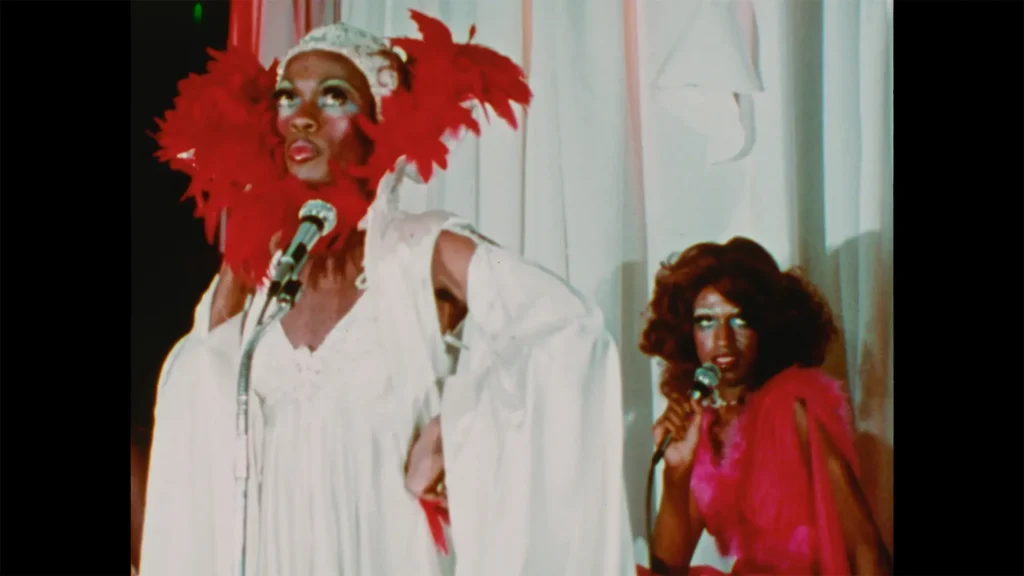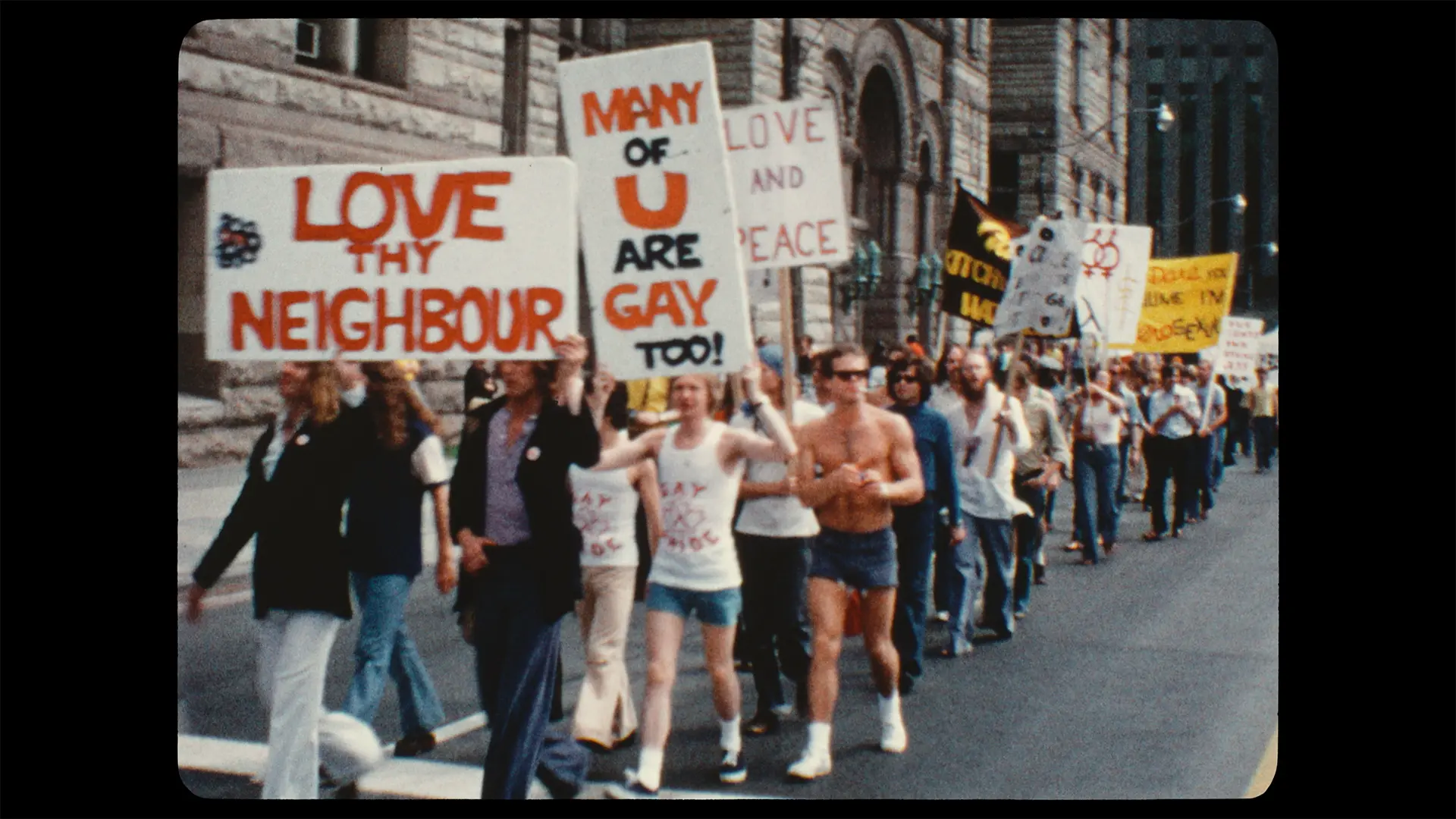New film explores the history of Canada’s 2SLGBTQI+ movement
Parade: Queer Acts of Love & Resistance is a film that seeks to honour the activists behind Canada’s early 2SLGBTQI+ movement. Directed by Noam Gonick and produced by Justine Pimlott, the film uses rarely seen archival material alongside first-person accounts to capture critical moments from police raids to early drag shows, community organizing to the House of Commons.
Recently, Joel Dickau, one of our Senior Archivists, had the opportunity to sit down with Rebecka Sheffield, Senior Manager in our Collections Development and Management branch, to discuss her work as Archival Consultant on the project.
Note: this interview has been edited for length and clarity.
Joel: Thanks so much for sitting down with me. I would love to start by asking how you became involved in the film? What appealed to you about it?
Rebecka: Prior to joining the OPS I worked closely with the ArQuives: Canada’s LGBTQ+ Archives, which is a partner on this film. They focus on collecting, preserving and making available the records of Canada’s queer community. The film uses archival imagery to tell the story of critical moments in the 2SLGBTQI+ movement, and it’s coming out at another critical moment.
It was really important to the director and the producer to show that this was a movement, a series of protests, demonstrations, and of course parades.
Joel: I think it’s interesting that you’re using the word movement. It’s not just a community history, but something more?
Rebecka: That’s how it was pitched to me, that you could be paraded through the medical establishment, paraded through the legal establishment, paraded down the aisle. It could also be pride parades. But the movement part was really important, because the stories we ended up telling were moments where communities moved together, pushed together against oppression or misunderstanding. Communities that still need to push for what’s right. It’s not just the aesthetic of the film, it’s the big idea behind it.
I don’t know how you’ll describe that, but I’ll let you sort it out!
Joel: That was perfect. It doesn’t sound like something just for academics, I think a lot of people are going to resonate with that idea.
Rebecka: Yeah. I mean, Parade is a metaphor in a way. But it was also clear from the outset that we couldn’t tell a comprehensive story of 2SLGBTQI+ people and our experiences. When you’re drawing from the archival material, you’re almost exclusively relying on things that were done in public. So we showed protests, demonstrations, parades, and then tied them together with intimate, personal stories. And the private material was a lot harder to find.
Joel: Interesting. How did you go about finding it?
Rebecka: We spoke to people who were there, but it was really important to the filmmakers that we weren’t just showing interviews, that we could show visuals to support the storytelling.
So we asked what kind of collections we should be looking at. I met a lot of archivists that way, rekindled friendships, pulled in some favours, spoke to Dalhousie University and the University of Saskatchewan. We ended up with twenty-two spreadsheets of material.
Joel: Ha!
Rebecka: That’s not a joke! I spent my evenings and weekend finding everything I could across the country.
Joel: Wow! That’s incredible. So what did you find? What does the material say about 2SLGBTQI+ history in Canada?
Rebecka: The earliest photos we found were taken as early as the 1920s. More materials appear in the 1950s and 1960s. But a lot of material starts to appear when the community starts self-documenting in the ‘70s and ‘80s, and especially the ‘90s with handheld cameras.

Jamaican-Canadian Drag Queen Performing in a Yonge Street bar.
Joel: Why weren’t people able to self-document earlier?
Rebecka: Well, one of the activists we interviewed pointed out that it was risky to develop film. Someone could turn you in, cause problems for you, or just destroy your film. The surviving material, beautiful black-and-white photographs of parties, picnics, and public events, were developed by people who could set up darkrooms in their basements.
Then there were the handful – I’m not even lying, like ten people in Canada who owned and developed 8mm footage. They took a risk developing it on their own.
Sadly, personal records were often thrown out. When families would discover their loved ones were gay or queer, they might throw out diaries or personal records out of shame. What we do have is precious, but only glimpses.
Joel: Wow. These are such important materials.
Rebecka: They’re the evidence that queer people exist today, that they existed yesterday, that they’ll exist tomorrow. In the absence of a shared heritage, we’ve been oppressed, silenced, hidden. With these documents we can build a shared heritage, we can show who we are. How we can push forward.
Joel: What materials does the Archives of Ontario have for people who want to learn more?
Rebecka: I’d definitely recommend people start with the David Troster fonds. One specific piece I’d like to point out is the 1991 Toronto Gay Pride Parade filmed by David Troster. There’s no sound to it, it’s just this beautiful film. Just the motion of him walking through the crowds. That’s what Parade is about. He takes you into the joy of the moment. He takes you into the grief as you’re going past the AIDS memorial. You see people who are looking at the names of their loved ones. And there’s so much more you can explore.
Watch the film
Parade: Queer Acts of Love & Resistance is available on the National Film Board of Canada website.

